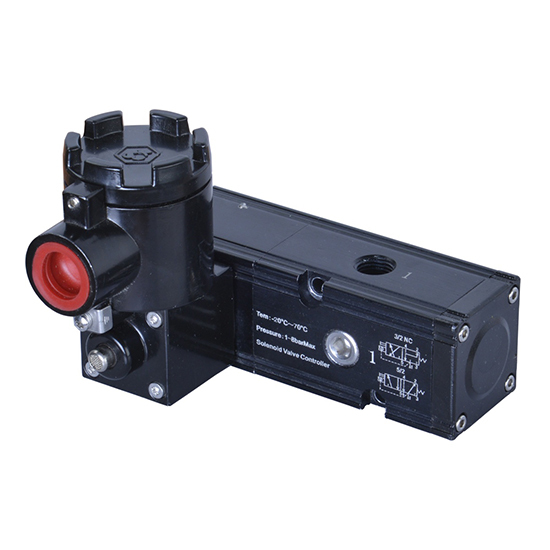Solenoid Valve
1.Fast Response: Quick operation.
2.Automation: Easy integration into automated systems.
3.Simple Design: Easy installation and maintenance.
4.Versatility: Usable with various media.
5.Safety: Fail-safe design.
6.Energy Efficiency: Power drawn only when changing states.

Every LORZEN Solenoid Valve has gone through highly controlled conditions to ensure the high quality of your Actuator Accessories.
Solenoid Valve: Controls the airflow in and out of the actuator.
A solenoid valve is an electromechanically operated valve, controlled by an electric current through a solenoid coil. Solenoids are coil-wound devices that produce a magnetic field when an electric current is passed through them. This magnetic field can then be used to generate a controlled, mechanical response.
In the case of a solenoid valve, the response is typically the opening or closing of the valve to control the flow of fluid. When the solenoid receives an electrical signal, it activates the valve by changing its state. This can either allow fluid to flow through the valve (when the valve is open) or prevent fluid from flowing (when the valve is closed).
Solenoid valves are used in a wide variety of applications, including controlling the flow of water in irrigation systems, regulating the flow of fuel in a combustion engine, and controlling the flow of air in pneumatic systems. They are commonly used in automated systems where remote control of a valve is needed.
Features:
Compact spools that can be converted from 3/2 to 5/2
NAMUR standard
Standard manual operation
DIN, waterproof and explosion-proof solenoid valves are available
Exhaust gas from spring position to protect actuators from corrosion
Operating temperature range -4 to +140℉ (-20 to +60℃)
All of threaded bolts connecting to ports can be provided in stainless steel, allow for highly corrosive atmospheres
Performance Testing
Our state-of-the-art facilities allow rigorous testing to validate function, endurance and environmental protection.
Quality Assurance
100% testing and inspection ensures superior performance of every actuator.
LORZEN Actuator Accessories Are Utilized Across Various Sectors, Including:
Actuator Design
Solenoid Valve Search
Under normal operating conditions. a safety factor of 20% - 30% is considered for double acting actuators
Example:
Valve torque= 100Nm
Safety torque- 100(1+ 30%) = 130Nm
Air source pressure=5Bar
Compared with the double-acting torque table, the specification of the optional Double-acting actuator is DA105.
- +8613736966003
- sales@lorzval.com
- Lorzen Factory Park, Linyang Industrial District, Oubei Town, Yongjia County, Wenzhou City, Zhejiang Province, China
Solenoid Valve Related Information
Installation and Maintenance
Installation and Maintenance
The installation and maintenance of a Actuator are relatively straightforward. Here are some basic steps:
Installation: During the installation process, it’s important to ensure the actuator is correctly aligned and secured in the right position. The actuator should be properly interfaced with the driven device (such as a valve or other mechanical component) to ensure accurate and efficient operation.
Maintenance: Maintenance of the actuator typically involves regular inspections and replacement of worn parts. This might include replacing seals, cleaning and lubricating moving parts, and checking and adjusting the control system. In most cases, just carrying out these maintenance steps periodically can ensure long-term reliable operation of the actuator.
Industry Applications/Functional Uses
Industry Applications/Functional Uses
Actuators have a wide range of uses in many different industries and applications. Here are some of the main application areas:
Manufacturing: On automated production lines, these actuators can be used to control a variety of mechanical equipment such as valves, drums, conveyors, etc.
Energy Sector: In the oil, gas, and electricity industries, these actuators can be used to control various types of valves, ensuring efficient distribution and use of energy.
Chemical Industry: In chemical processes, these actuators can be used to precisely control conditions for various chemical reactions, such as temperature, pressure, and flow rate.
Water Treatment: In water treatment facilities, these actuators can be used to control various equipment like pumps, valves, and filters, ensuring effective water treatment.
Food and Beverage Industry: In the production process of food and beverages, these actuators can be used to control various equipment like mixers, ovens, and packaging machines, ensuring efficiency and quality in the production process.
These are just some of the main application areas for Actuators. Thanks to their simple design and operating principle, these actuators can adapt to a variety of different applications and environments.


